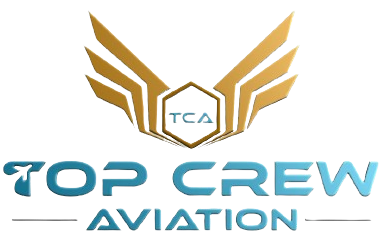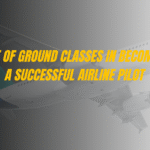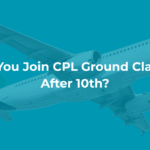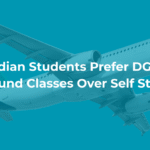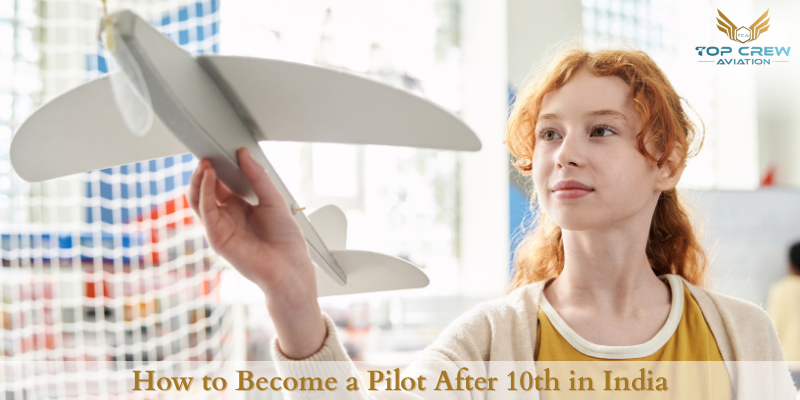
Flying an airplane thousands of feet above the ground is a dream for many students. The good news is that you can start preparing to become a pilot after 10th class in India. While actual flight training and the Commercial Pilot License (CPL) require you to complete 12th with Physics and Math, starting early gives you a significant advantage.
In this guide, you will learn how to become a pilot after 10th in India in a simple and step-by-step way. We’ll cover everything you need to know—like aviation courses after 10th, required qualifications, DGCA medical tests, training cost, and the best flying schools in India. You’ll also find details about pilot training in Jaipur and top aviation academies to help you plan better.
If flying is your dream, this blog will guide you toward the right path from day one.
Is It Possible to Become a Pilot After 10th in India?
Let’s clarify the most important question first.
Can you join a flying school after 10th in India?
No. The Directorate General of Civil Aviation (DGCA), which is the governing authority for pilot training in India, mandates that a candidate must complete 10+2 education with Physics and Mathematics before they can apply for a Commercial Pilot License (CPL).
However, if you’ve just completed your 10th, it’s the perfect time to start planning your aviation career. Early preparation will give you a strong foundation and help you stay ahead.
Step 1: Choose the Right Stream in 11th and 12th – Science with PCM
After 10th, the first and most critical step is to choose the Science stream, specifically the combination of:
- Physics
- Chemistry
- Mathematics
This PCM combination is mandatory for all aspiring commercial pilots. Without it, you cannot apply for a Student Pilot License (SPL) or Commercial Pilot License (CPL) in India.
If, for some reason, you didn’t take Physics and Math in your 12th grade, don’t worry. You can still become eligible by appearing for these subjects through NIOS (National Institute of Open Schooling). Many pilot aspirants take this route to fulfill the DGCA eligibility.
Step 2: Start Preparing with Aviation Ground Classes
After completing your 12th with PCM, you can now begin formal aviation training. The first stage is enrolling in aviation ground school, which prepares you for the theoretical exams conducted by DGCA.
In ground school, you’ll study key aviation subjects such as:
- Air Regulations
- Air Navigation
- Aviation Meteorology
- Technical General
- Technical Specific
- Radio Telephony (RTR)
These subjects form the core knowledge every pilot must have before taking off into the skies. If you’re looking for aviation courses after 10th (to begin early preparation), many flying schools also offer foundation courses during or after high school to help you understand aviation basics.
If you’re based in Rajasthan, enrolling in a ground school that offers pilot training in Jaipur is an innovative and affordable choice. Jaipur is emerging as a key hub for aviation education with top-rated flying schools and DGCA-certified instructors.
Step 3: Enroll in a DGCA-Approved Flying School
Once your theoretical knowledge is in place, the next step is to enroll in a DGCA-approved flying school. These institutes offer both ground and flight training, and help you progress toward earning your SPL, PPL, and ultimately CPL.
How to Choose the Right Flying School:
- DGCA Approval
- Modern aircraft fleet and simulators
- Experienced flying instructors
- Transparent pricing
- Good infrastructure and hostel facilities
- Past student success stories
Jaipur has some of the best flying schools in Rajasthan. Among them, Top Crew Aviation stands out for its modern training programs, affordable fee structure, and strong placement guidance.
Step 4: Apply for Student Pilot License (SPL)
Before you take your first solo flight, you need to apply for an SPL (Student Pilot License). This license allows you to fly under supervision at your training school.
Eligibility for SPL:
- Minimum age: 16 years
- Passed 10+2 with PCM
- Class 2 Medical Certificate (DGCA-approved doctor)
- Written exam in:
- a. Basic air regulations
- b. Aircraft parts
- c. Aviation terminology
Once you receive your SPL, you’re officially a student pilot, and your in-air training begins.
Step 5: Complete Flying Hours for Private Pilot License (PPL)
To get your PPL (Private Pilot License), you must complete a minimum of 40 to 50 hours of flying, including:
- Dual flights (with instructor)
- Solo flights
- Navigation exercises
- Night flying (optional)
- Emergency procedures
Why is PPL important?
Even though it doesn’t allow you to fly commercially, it’s a crucial step in building your confidence, flying skills, and flight logbook hours, which are required for CPL.
Some flying schools offer integrated CPL training that includes PPL and lets you transition directly into commercial training after PPL.
Step 6: Obtain a Commercial Pilot License (CPL)
This is the most crucial license for anyone who wants to fly aircraft professionally. A CPL (Commercial Pilot License) enables you to work as a pilot in airlines, charters, cargo services, and more.
CPL Eligibility Requirements:
- Minimum age: 18 years
- Passed 10+2 with PCM
- Completed PPL with a minimum of 50 flying hours
- Class 1 Medical Certificate (DGCA-approved)
- Cleared DGCA exams in all subjects
- Minimum 200 hours of total flight time
Training Includes:
- Solo cross-country flying
- Night flying
- Instrument flying
- Multi-engine training (optional but highly recommended)
After completing this, you officially become a licensed commercial pilot in India.
CPL Training Cost in India – How Much Does It Cost?
One of the most common concerns among aspiring pilots is the cost of training. Let’s break it down.
| Training Component | Estimated Cost (₹) |
| Ground school & theoretical classes | ₹2 – ₹3 lakhs |
| Flying hours (200+ hours) | ₹25 – ₹40 lakhs |
| Medical tests + DGCA fees + materials | ₹1 – ₹2 lakhs |
| Total CPL Training Cost India | ₹30 – ₹50 lakhs |
This cost may vary depending on the location, aircraft type, fuel charges, and whether the school offers multi-engine training or simulator hours.
If you’re looking for an affordable and quality option, choosing pilot training in Jaipur can save significant costs without compromising training standards.
Step 7: Add Instrument Rating and Type Rating
To increase your chances of landing a job with major airlines, you’ll need additional certifications:
Instrument Rating (IR)
- Trains you to fly in bad weather or poor visibility using only instruments.
- Usually included in CPL programs, but can be taken separately.
Type Rating
- Special training on a specific aircraft type (like Airbus A320 or Boeing 737).
- Mandatory to join an airline as a First Officer.
- Typically costs around ₹15–₹25 lakhs, depending on the aircraft and institute.
Most airlines in India require a Type Rating before hiring. Some cadet programs include it in their curriculum.
Step 8: Start Your Career as a Commercial Pilot
Once you have your CPL and required ratings, you’re ready to begin your career as a pilot. There are multiple job paths you can explore:
Career Options for Commercial Pilots:
- First Officer in domestic/international airlines
- Flight Instructor at flying schools
- Charter pilot (private jets)
- Corporate pilot
- Cargo airline pilot
- Aerial photography or surveying
- Government or defence aviation (after passing respective exams)
Some airlines also offer cadet pilot programs where students undergo advanced training with a direct job offer after completion.
Top Flying Schools in Jaipur – Where to Train?
If you’re looking to study closer to home, Jaipur offers some of the best flying schools in India. These institutes offer:
- DGCA-approved training programs
- Modern aircraft like Cessna 172s
- Structured CPL and PPL training
- Professional instructors and career guidance
Recommended Flying School:
Top Crew Aviation – Jaipur
One of the most reputed names in Rajasthan, Top Crew Aviation offers affordable CPL programs, experienced faculty, and complete support for DGCA medicals, visa guidance (for those going abroad), and job placement.
Final Words—Start Early, Fly High!
So, how to become a pilot after 10th in India?
It all starts with making the right decision after the 10th grade. Choose PCM in 11th and 12th, build your foundation with ground school, join a reputed flying school, and work hard to complete your 200+ flying hours.
If you’re ready to chase your dreams, now is the time to begin. With pilot training in Jaipur becoming more accessible, you can pursue aviation without moving to metro cities.
The journey from classroom to cockpit takes time, dedication, and a clear plan—but once you get your wings, the sky is truly the limit.
Suggestion URL :
- How to Become a Pilot After 10th in India
- How to Prepare for DGCA Exams
- How to Become an Airline Pilot in India
- How to Become a Pilot in India
- How to Clear DGCA Exams in First Attempt
- Commercial Pilot Training in Jaipur
- Pilot Training Institute in Delhi
Frequently Asked Questions (FAQs)
1. How many hours do pilots work?
Commercial pilots typically work 75–100 flying hours per month, not including time spent on the ground for planning, standby, or training. Flight duty hours are strictly regulated by DGCA in India for safety.
2. What is the retirement age for pilots?
In India, airline pilots usually retire at the age of 65, as per DGCA regulations. However, private or charter pilots may continue flying depending on medical fitness and company policies.
3. Which exam is for pilot?
To become a pilot in India, you must clear DGCA (Directorate General of Civil Aviation) exams. These include subjects like Air Regulations, Meteorology, Navigation, Technical General, and Radio Telephony (RTR).
4. How to join flying school?
To join a flying school in India:
- Complete Class 12 with Physics and Math
- Pass DGCA Class 2 and Class 1 Medical Tests
- Apply to a DGCA-approved flying school
- Clear the admission process (written test/interview if applicable)
5. Is 10th marks important for pilots?
Not directly. 10th marks are not a requirement for pilot training. However, you must pass 12th with Physics and Math to be eligible for a Commercial Pilot License (CPL).
6. Which school is best for flying?
There are many good flying schools, but one of the most reputed is Top Crew Aviation, with branches in Jaipur and Delhi. It is known for expert instructors, DGCA-approved training programs, and high placement records.
Frequently Asked Questions
No FAQs found.
